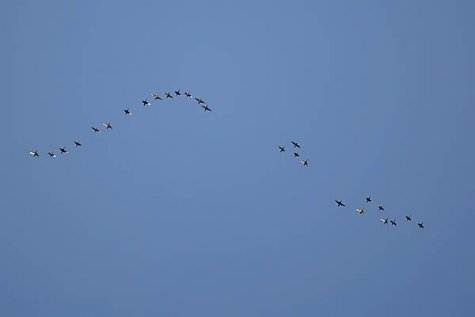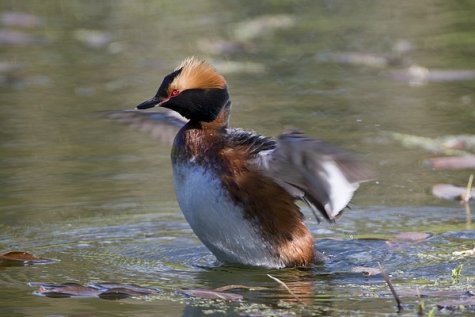Birder's diary - 14 and 15.05
In the morning I wouldn’t have guessed that this day would end with a particularly powerful waterfowl migration experience. While only some ten thousand waterfowl were to be seen in the morning at Ristna nina, then in the evening the sky at times was thickly filled with birds, and before sunset more than 100000 waterfowl flew towards north during a few hours. Today again scoters (nearly 111000 birds) and long-tailed ducks (more than 50000 birds) were migrating most massively, but 7000 barnacle geese too came across the sea from the direction of Sweden. Among the barnacle geese were also 263 brent geese. This species I haven’t seen earlier this year, my 2012 year list now has 236 bird species.
Today a report came about 4 black-necked grebes at Audru polder. It was assured that the birds had been clearly seen, and that the observers who had plenty of experience of the species were several and there was no doubt about the species identification. So the information was distributed through Rariliin (Birdline) and probably quite many twitchers raced to see the rare species. The birds were found at once but instead of the black-necked grebes there were 4 horned grebes, a relatively common species here. We have to do with comparatively similar species but still even a moderately experienced birdwatcher should know them. Sadly, birdwatchers and deminers may only go wrong once: deminers lose their life and birdwatchers lose their credibility (particularly when there have been several similar incidents within a short period). The greatest enemy of a birdwatcher is extreme cocksureness. On the evidence of a single tweet or a glimpsed movement in a bush, or a foggy shape seen at extreme distance, certain identification of a species cannot and must not be done. Even when encountering a common species, particularly when the bird is seen at the wrong time and in the wrong place, identification must always be reviewed critically. To err is human but it must be admitted. To admit mistakes surely raises the credibility of an observer.










